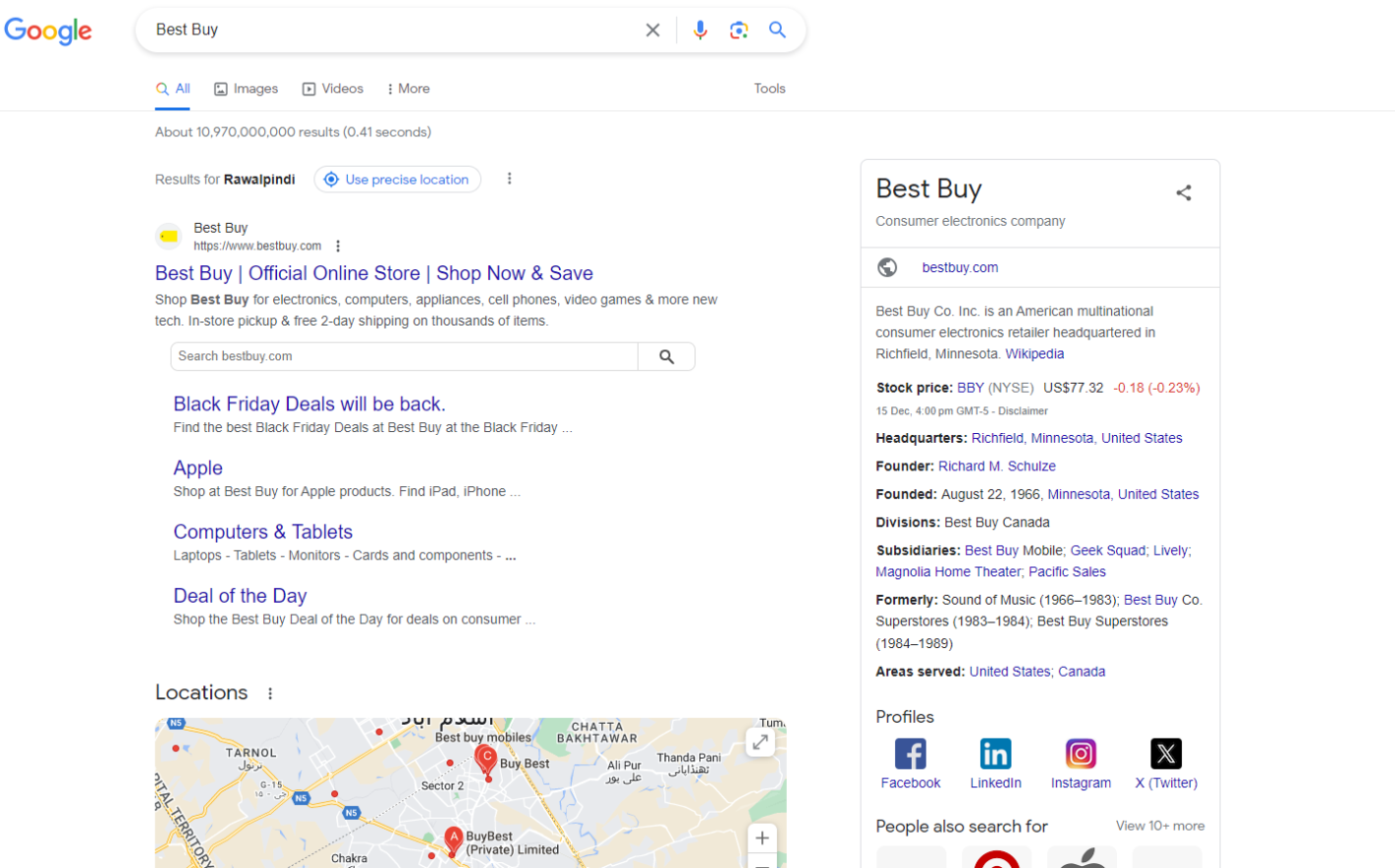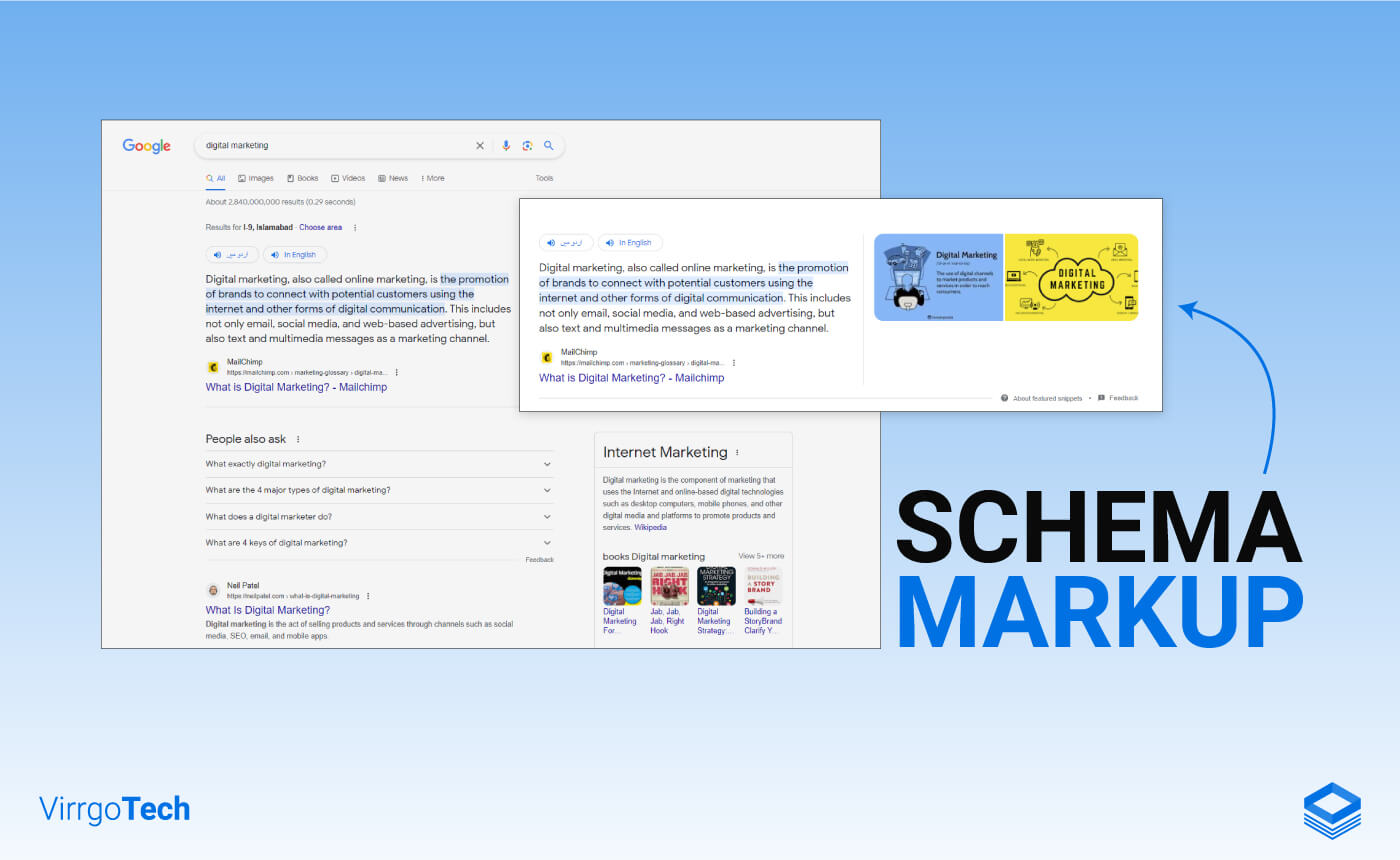Schema markup, also known as structured data, is a tool primarily for search engines. It helps these engines understand the content of web pages. Think of it as a special language for search engines, offering a clear context of your website’s web pages.
Many people, especially those not well-versed in coding or basic SEO (Search Engine Optimization), might find the concept of schema markup intimidating. However, it’s not as complex as it seems. With a bit of learning and practice, anyone can implement basic schema markup on their website.
For those new to the term or wanting to learn more, this beginner’s guide is a great starting point.
The Origin of Schema Markup
Schema Markup was introduced in 2011 through Schema.org, a collaborative effort by four major search engines: Google, Bing, Yahoo, and Yandex. The primary goal of schema markup is to enhance the quality of search results.
What Does Schema Markup Mean?
Schema markup is a set of microdata that helps search engines like Google, Yahoo, and Bing to read and understand the content on website pages.
You might wonder if search engines have difficulty understanding website content. Generally, they can effectively read and comprehend words, but they might miss the true context of the content. For instance, a search engine might recognize that a page contains information about the “Burj Khalifa” but may not understand if the page is offering tour guide services, news articles, or something else.
By incorporating schema markup, your website can provide clear and concise information. This clarity helps search crawlers identify the most relevant content based on the user’s search intent, thereby improving your website’s visibility in the Search Engine Results Pages (SERPs).
The Impact of Schema Markup
In today’s digital age, schema markup has significantly transformed search engine results. Consider the scenario from two decades ago: searching for “chocolate donut recipes” would yield results featuring web pages with this phrase in the title or body, but the precision was lacking.
Now, search engines like Google offer more refined and relevant results. Typically, websites that provide comprehensive recipes, including ingredients, cooking time, and images, rank higher in the Search Engine Results Pages (SERPs).

Incorporating schema markup on your website enables better crawling by Google, leading to its display in rich snippets. This can significantly boost the click-through rates of your website.
Does Schema Markup Influence Search Rankings?
The online marketplace is vast, with over 50 billion web pages. According to Schema.org, out of these, over 10 million web pages utilize schema markup.
So, do these 10 million schema-using pages rank higher on SERPs? There’s no concrete evidence that schema directly impacts organic search rankings. However, rich results from schema markup increase a website’s visibility, which can lead to higher click rates.
Where to Use Schema Markup?
While not mandatory, schema markup is beneficial for both Google crawlers and your website. It can be effectively used across various sections of your website, including:
- Blogs
- FAQs
- Events
- Products
- Breadcrumbs
- Videos
- Recipes
- Local Businesses
- Organizations
- Job Postings, and more.
SEO Advantages of Schema Markup
Schema markup represents one of the most recent advancements in SEO. It offers numerous benefits for your website, such as enhancing your online presence and click-through rates. Rich snippets, in particular, play a crucial role in boosting these rates.
Some schemas are so effectively implemented that they dominate an entire section of the SERP, showcasing their impact on visibility and user engagement.

Leveraging Schema for Enhanced Website Presentation and Voice Search Compatibility
Schema markup not only aids in structuring your website content but also aligns it with the E-A-T (Expertise, Authoritativeness, Trustworthiness) principle, making it more suitable for voice search features. Let’s delve deeper into these benefits.
Better Understanding of Website Content
Schema Markup plays a crucial role in helping search engine crawlers accurately interpret your website’s content. There are instances where Google bots might misconstrue the information on a webpage, leading to your site ranking for an incorrect keyword.
Imagine a scenario where a user searches for a particular keyword and lands on your site, only to find it’s not what they were looking for. This mismatch can result in a quick exit from your website. Although this doesn’t happen often, search engines tend to not rank content they don’t fully understand. Here, Schema bridges the gap by clearly outlining information in a straightforward and precise way for search crawlers.
Boosting Click-Through Rates (CTRs)
One of the key SEO benefits of schema is the potential to improve Click-Through Rates (CTRs). CTR is the number of clicks your website receives when it appears on search result pages. For instance, if a user searches for “how to use an ATM card?” and you’ve implemented schema on a video on your site, it might show up in the SERP.

When users click on this video, their CTR increases. Similarly, applying the schema to FAQs, images, recipes, and other content types not only elevates your CTRs but also captivates readers by providing solutions to their queries. This fosters trust and confidence, indicating that your content is aligned with their search intent.
Highlighting the E-A-T Principle with Schema Markup
Schema markup plays a pivotal role in showcasing high-quality content to search engines, particularly aligning with Google’s E-A-T principle (Expertise, Authoritativeness, and Trustworthiness).
One effective way schema does this is by detailing the author’s information on your website. For instance, each blog post might feature the author’s name, their qualifications, a brief bio, and sometimes links to their social media profiles. These elements contribute to establishing authenticity and credibility in the eyes of Google’s algorithms.
It’s also crucial to align your use of schema with your SEO objectives. Integrating schema into your web pages can be a strategic step toward achieving your SEO goals.
Facilitating Voice Search Readiness
Ever asked Google a question and received an answer via its voice feature? This functionality is powered by Google’s voice assistant, which delivers spoken responses.
Schema markup guides search engine bots to identify which part of your content should be vocalized in response to a query. This could be a concise summary or a select paragraph from your content.
Following the spoken snippet, Google often displays the rest of the content or the full article for further reading. This approach is widely adopted by news sites and other content-rich websites.
Final Thoughts
Initially, schema markup might seem like a complex technical term, but it’s actually a valuable tool for your website. It acts like a storyteller for search engines, ensuring they accurately understand and represent your content.
Schema markup has significantly altered the landscape of search results, shifting from broad and vague responses to more specific and relevant ones. It’s a key player in enhancing both the visibility and click-through rates of websites.
 +1-713-701-5823
+1-713-701-5823 +92-518-441-742
+92-518-441-742